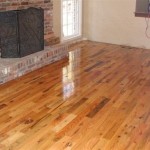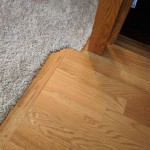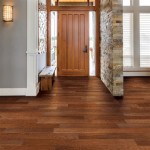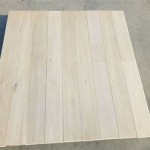DIY Bamboo Flooring: Essential Aspects for a Perfect Installation
Upgrading your flooring with durable and sustainable bamboo can add a touch of elegance and warmth to your home. While it's possible to install bamboo flooring yourself, it's important to understand the essential aspects of the process to ensure a seamless and satisfactory result.
Choosing the Right Type of Bamboo
Bamboo flooring comes in two main types: strand woven and engineered. Strand woven bamboo is made from compressed and woven bamboo fibers, resulting in a solid and durable material. Engineered bamboo consists of several layers with a bamboo veneer top layer, offering a more flexible and moisture-resistant option.
Preparing the Subfloor
A smooth and level subfloor is crucial for a successful installation. Remove any existing flooring, level uneven areas with a self-leveling compound, and ensure the subfloor is dry and free of debris.
Installing an Underlayment
An underlayment provides a moisture barrier, sound absorption, and increased comfort underfoot. Choose an underlayment designed specifically for bamboo flooring and follow the manufacturer's instructions for installation.
Laying the Bamboo Planks
Start by installing the first row of planks with the tongue facing towards the wall. Use a tapping block and a hammer to gently tap the planks into place. Stagger the joints in consecutive rows to enhance the strength and stability of the flooring.
Expansion Gap
Allow for a small expansion gap around the perimeter of the room to prevent buckling due to temperature or humidity changes. This gap can be covered by baseboards or molding.
Finishing the Installation
Once the bamboo planks are installed, secure the edges with nails or screws hidden under the baseboards. Inspect the flooring for any gaps or imperfections and address them promptly. Clean the flooring thoroughly and apply a protective finish, such as a polyurethane or wax, to enhance durability and moisture resistance.
Maintenance and Care
To maintain the beauty and longevity of bamboo flooring, sweep or vacuum regularly to remove dust and debris. Use a damp mop for occasional cleaning. Avoid excessive moisture and protect the flooring from direct sunlight or drastic temperature changes to prevent warping.
By understanding these essential aspects of DIY bamboo flooring, you can confidently embark on your own installation project and create a stunning, sustainable, and long-lasting floor in your home.

Diy Solid Bamboo Wood Flooring Happihomemade Family Friendly Recipes

Diy Solid Bamboo Wood Flooring Happihomemade Family Friendly Recipes

Diy Solid Bamboo Wood Flooring Happihomemade Family Friendly Recipes

Diy Solid Bamboo Wood Flooring Happihomemade Family Friendly Recipes

Diy Solid Bamboo Wood Flooring Happihomemade Family Friendly Recipes

China Bamboo Diy Flooring Factory Whole

How To Install Bamboo Flooring Floated Diy Method

Diy Bamboo Flooring A Real Family Affair Plantation

How To Install A Solid Bamboo Floor Step By Guide

China Bamboo Diy Flooring Factory Whole








